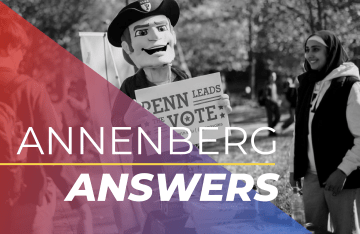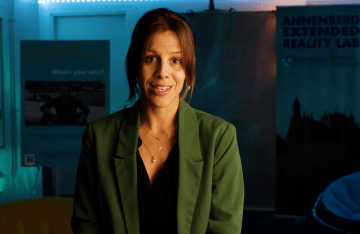How Tobacco Retail Exposure Impacts Smoking Behavior
Penn researchers have found that smokers report higher levels of craving and smoked more cigarettes on days when their exposure to tobacco retail is higher.

Studies have found that the density of tobacco retailers in a neighborhood is associated with smoking, the leading cause of preventable disease and death. But what if smokers and policymakers were able to understand the impact of this exposure not just on a population level but at the individual level? Rather than relying on longer recall periods and assumptions about how people move through their neighborhoods, as many studies do, what if researchers could follow the movements and behaviors of smokers more naturally—hour by hour, day by day?
University of Pennsylvania researchers have found that people who smoke reported significantly higher levels of craving and smoked significantly more cigarettes on days when their exposure to places selling tobacco is higher, as measured by geolocation tracking on their phones. When participants were proximate to more tobacco retail than usual in the past hour, they also reported smoking more cigarettes. These findings are published in JAMA Network Open.
“For smokers, it’s important to know that being exposed to stores that sell tobacco is risky,” says senior author Emily Falk, an Annenberg School for Communication professor and expert in the science of behavior change. “It’s important for policymakers to know this as well, because the places that sell tobacco are concentrated in communities that already have fewer resources. For everyone, knowing how much the places we spend time might shape our decision-making is powerful.”
The idea for this interdisciplinary study dates to 2014, and over time the team grew to include experts in health communication, tobacco marketing, and geospatial analysis, as well as a team of research staff who led data collection, says the project’s research director, Nicole Cooper, who is now managing director of research in Falk’s Communication Neuroscience Lab.
Researchers tracked each of the 273 participants—who live in Pennsylvania, New Jersey, and Delaware and range in age from 21 to 65—over a 14-day period. Participants were prompted to report cravings and number of cigarettes smoked four times daily—twice at the same time every day, and twice at a random time within a 4-hour window—and the number of cigarettes smoked daily.
To measure tobacco retail exposure, researchers built a database of 36,580 retailers—such as convenience stores, grocery stores, and smoke shops—across the three states and compared these sites to participants’ location logs. First author Benjamin Muzekari, an Annenberg doctoral candidate, says “exposure” means participants could have been inside or outside of retailers, and it’s unclear how conscious participants were of their exposure to tobacco retail.
“This study provides insight into dynamic associations between naturalistic exposure to tobacco retailers and smoking behaviors, which may inform public policy and health behavior change interventions to reduce smoking,” the authors write.
Looking ahead, these maps of where participants spent their time can help researchers understand other aspects of their environment, such as pollution exposure, heat, and time spent in green spaces with trees, Falk says. “We’re interested in how those broader factors might combine with exposure to risk factors like tobacco retail to make it more or less likely that people smoke, get exercise, or feel stress, and how this all adds up to more or less well-being,” she says.
Muzekari notes that researchers are also using functional magnetic resonance imaging to investigate what is happening in the brain when people who smoke see images of tobacco marketing. This can provide insight into the link between retail exposure, craving, and smoking, and yield information about targets for intervention.
Emily B. Falk is a professor of communication, psychology, marketing, and operations, informatics, and decisions at the University of Pennsylvania; vice dean of the Annenberg School for Communication; director of the Communication Neuroscience Lab; and director of the Climate Communication Division at the Annenberg Public Policy Center.
Nicole Cooper is the managing director of research at the Communication Neuroscience Lab.
Benjamin Muzekari is a doctoral candidate at the Annenberg School for Communication.
The other co-authors from Penn are José Carreras-Tartak, Susan Hao, David Lydon-Staley, Bradley Mattan, Alexandra M. Paul, Anthony Resnick, and Omaya E. Torres-Grillo of the Annenberg School for Communication; Ian J. Barnett and Andrew A. Strasser of the Perelman School of Medicine; Michael A. Fichman and Emily Zhou of the Weitzman School of Design; and Elizabeth Beard of the Wharton AI & Analytics Initiative at the University of Pennsylvania. Additional co-authors include Mary E. Andrews of Stony Brook University; Melis E. Cakar of the University of California; Lisa Henriksen of the Stanford University School of Medicine; Darin Johnson of the University of South Carolina; Thomas A. Kirchner of New York University; Steven Mesquiti of Princeton University; Farah Sayed of the University of Cincinnati College of Medicine; and Christin Scholz of the University of Amsterdam.
This research was supported by the National Cancer Institute (grants 1R01CA229305-01A1 and P50CA179546) and National Institutes of Health/Common Fund (grant DP2DA035156-01).



